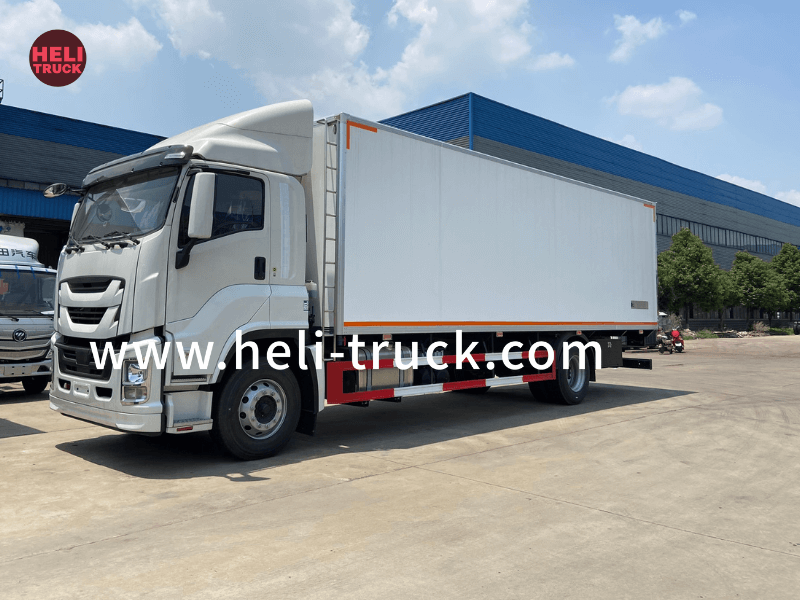Introduction
Vacuum trucks play a crucial role in various industries, including waste management, construction, and environmental cleanup. These specialized vehicles are equipped with powerful vacuum systems that can suck up liquids, sludge, and solids, making them essential for tasks such as cleaning septic tanks, removing hazardous materials, and maintaining drainage systems. However, operating a vacuum truck comes with a unique set of challenges, particularly when it comes to compliance with regulations governing their use. In this article, we will explore the key regulations that govern vacuum trucks, the importance of compliance, and best practices for ensuring safety and adherence to these rules.
Regulations Governing Vacuum Trucks
1. Environmental Protection Agency (EPA) Regulations
The Environmental Protection Agency (EPA) plays a significant role in regulating the use of vacuum trucks, particularly when it comes to handling hazardous materials. The Resource Conservation and Recovery Act (RCRA) sets forth guidelines for the proper management and disposal of hazardous waste, including the transportation of such materials using vacuum trucks. Operators must adhere to strict protocols to ensure the safe handling, containment, and disposal of hazardous waste to prevent environmental contamination and harm to public health.
2. Department of Transportation (DOT) Regulations
The Department of Transportation (DOT) has established regulations that govern the transportation of materials, including those carried by vacuum trucks. These regulations include requirements for vehicle inspections, maintenance, driver qualifications, and the transportation of hazardous materials. Vacuum truck operators must comply with DOT regulations to ensure the safety of both the operators and the public while transporting materials on public roads.
3. Occupational Safety and Health Administration (OSHA) Regulations
The Occupational Safety and Health Administration (OSHA) sets forth regulations aimed at ensuring the safety and health of workers who operate vacuum trucks. These regulations cover a wide range of topics, including the use of personal protective equipment, proper training for operators, guidelines for working in confined spaces, and protocols for handling hazardous materials. Compliance with OSHA regulations is essential to prevent workplace injuries, illnesses, and accidents that can result from improper handling of vacuum trucks.
Importance of Compliance with Vacuum Truck Regulations
Compliance with vacuum truck regulations is crucial for several reasons, including:

1. Environmental Protection: Proper handling and disposal of hazardous materials are essential to prevent contamination of soil, water, and air. Compliance with EPA regulations helps protect the environment and public health from the harmful effects of hazardous waste.
2. Public Safety: Adhering to DOT regulations ensures the safe transportation of materials on public roads, reducing the risk of accidents, spills, and other incidents that could endanger public safety.
3. Worker Health and Safety: Compliance with OSHA regulations is vital to protect the health and safety of vacuum truck operators and other workers involved in the operation of these vehicles. Proper training, use of personal protective equipment, and adherence to safety protocols can prevent workplace injuries and illnesses.
Best Practices for Ensuring Compliance and Safety
To ensure compliance with vacuum truck regulations and promote safety in the industry, operators should follow these best practices:
1. Regular Training: Provide comprehensive training for vacuum truck operators on safe operating procedures, handling of hazardous materials, and emergency response protocols. Ongoing training and refresher courses can help reinforce best practices and ensure that operators are up to date on the latest regulations.
2. Maintenance and Inspections: Conduct regular inspections and maintenance of vacuum trucks to ensure they are in proper working condition. Check for leaks, malfunctions, and wear and tear on equipment to prevent breakdowns and accidents.
3. Record Keeping: Maintain detailed records of inspections, maintenance activities, training sessions, and any incidents involving vacuum trucks. Proper documentation can demonstrate compliance with regulations and provide a record of due diligence in case of audits or investigations.
4. Emergency Response Plans: Develop and implement emergency response plans for handling spills, accidents, or other incidents involving vacuum trucks. Ensure that all operators are familiar with the protocols and procedures for responding to emergencies and have access to necessary equipment and resources.
5. https://www.heli-truck.com/water-tank-truck/ and Reporting: Implement systems for monitoring and reporting compliance with regulations, including tracking of waste disposal, transportation routes, and driver logs. Regularly review and analyze data to identify areas for improvement and ensure ongoing compliance with regulatory requirements.
Conclusion
Compliance with vacuum truck regulations is essential for protecting the environment, ensuring public safety, and promoting the health and well-being of workers in the industry. By following best practices, operators can navigate the complex landscape of regulations governing vacuum trucks and maintain a safe and compliant operation. Through training, maintenance, record keeping, emergency response planning, and monitoring, operators can uphold the highest standards of safety and compliance in the use of vacuum trucks.
